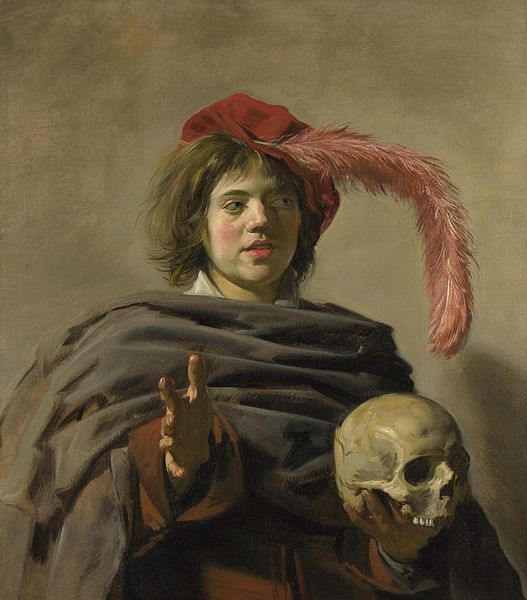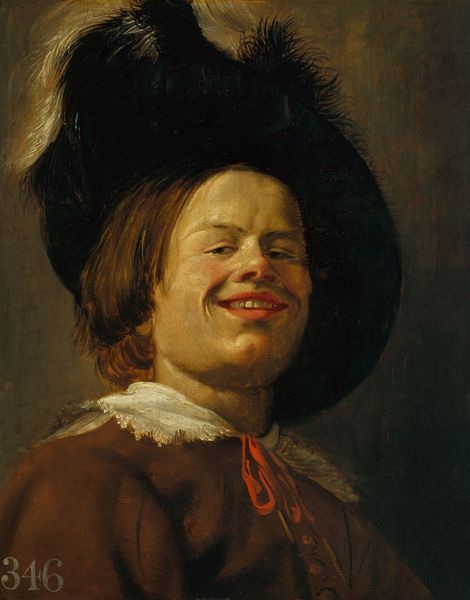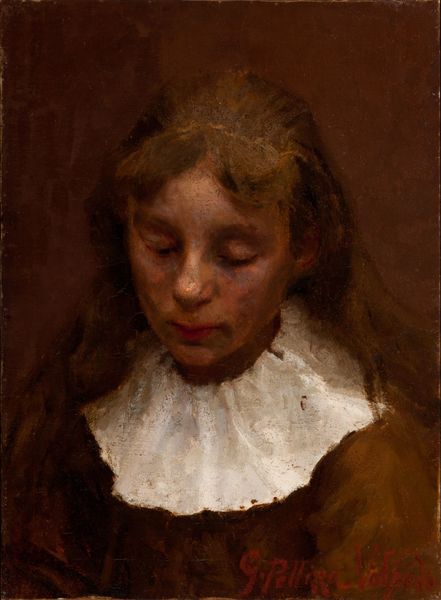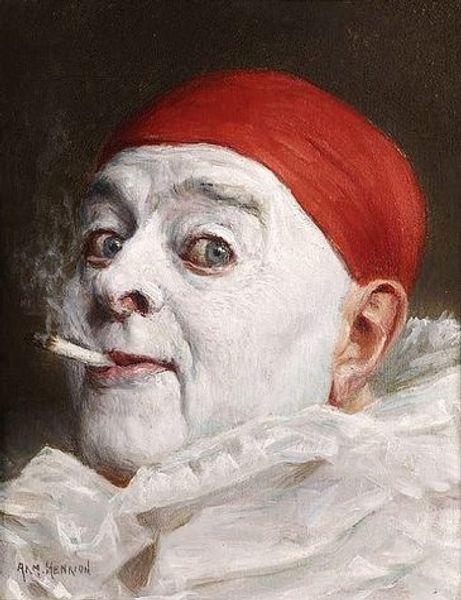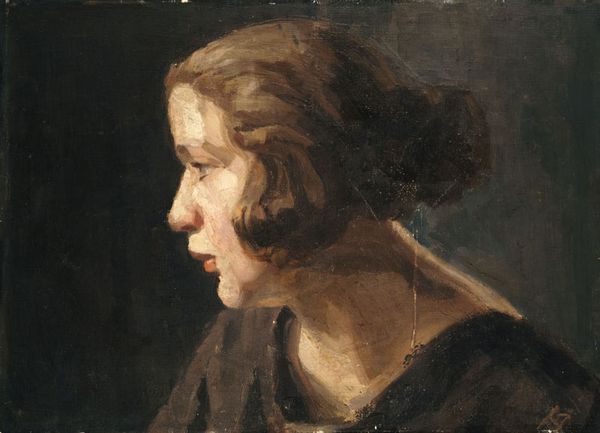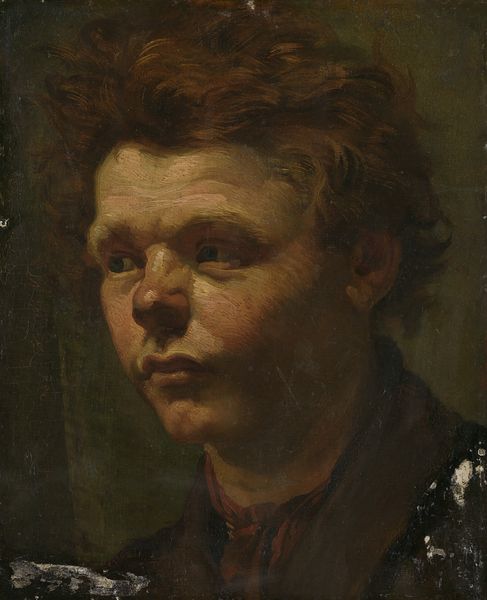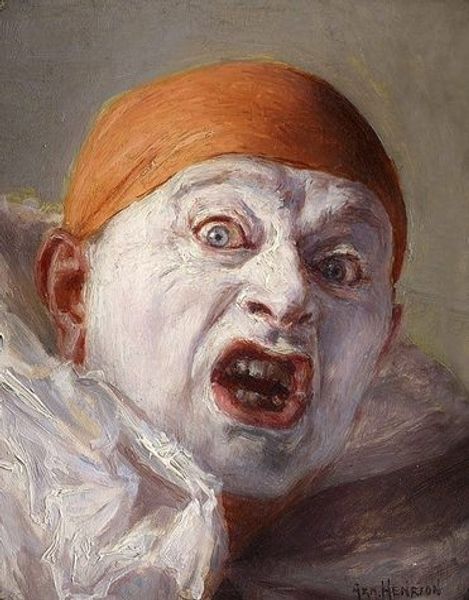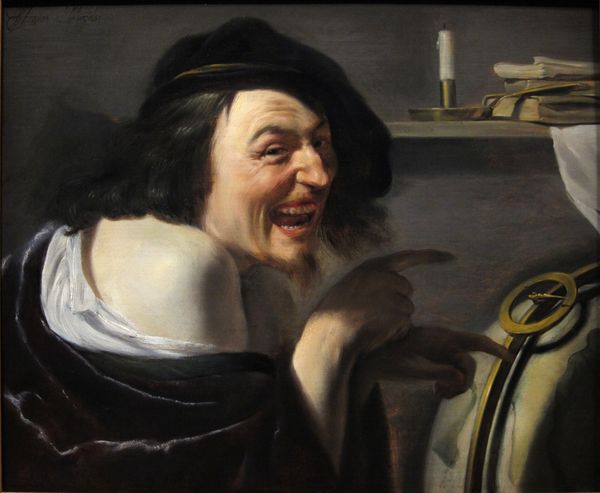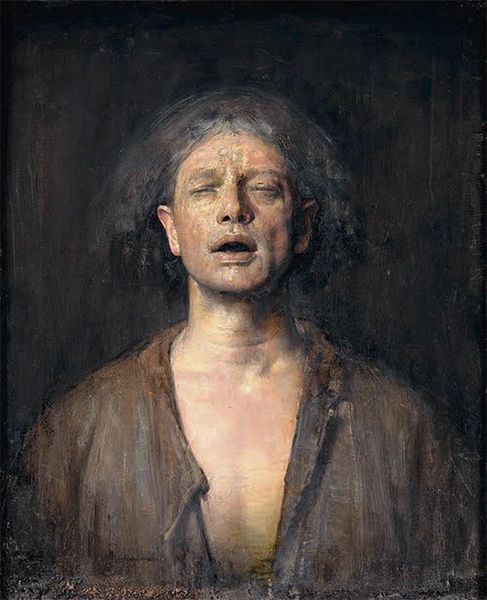
painting, oil-paint
#
portrait
#
self-portrait
#
baroque
#
painting
#
oil-paint
#
genre-painting
Dimensions: height 8.9 cm, width 7.9 cm, depth 0.5 cm, height 8.1 cm, width 7.2 cm, height 9.3 cm, width 8.3 cm, depth 0.4 cm, height 16.7 cm, width 15.5 cm, depth 2.7 cm
Copyright: Rijks Museum: Open Domain
Curator: Well, well, isn't this interesting! What's your immediate reaction to this portrait, which is attributed to Moses ter Borch from around 1660 or 1661, and entitled "Self Portrait, The so-called 'Portrait of Jan Fabus'" here at the Rijksmuseum. Editor: Huh. It feels...boisterous? Maybe tipsy? The eyes, that grin—it’s like he's just shared a naughty joke with a twinkle. Definitely not your stoic, chin-up Renaissance dude. Curator: Indeed. While portraits during this era, influenced by the Baroque, often captured wealth and power, this painting takes a markedly different route. Consider the genre scene blended with self-portraiture, reflecting broader social shifts, and the increasing presence of the common person in art. It prompts the question of who gets represented, and how. Editor: Absolutely! And look at the light—it's practically spotlighting that smirk. You can almost hear a chuckle. Materials-wise, that oil paint gives the skin such a luminous, almost fleshy feel. Did portraiture become... performative? Curator: Precisely! And, yes, thinking of this oil on panel construction alongside performativity allows for a consideration of portraiture beyond just representation. Think about societal norms and expectations of class, and of artistic creation. It challenges viewers to think about the role of artists in visually shaping narratives. This self-aware style definitely prefigures later developments. Editor: It does, doesn't it? Makes me wonder, what would a contemporary artist make of this piece now? Imagine a photorealistic sculpture... Or maybe a meme? I’m almost tempted to say that’s an antecedent to today’s online culture! Curator: What's so captivating is that the playful representation clashes productively with societal hierarchies, reminding us that humor and humanity could be intertwined. I mean, the artwork challenges those ideals, suggesting the artist can simultaneously subvert and occupy the genre. Editor: Agreed, it’s like he’s pulling the velvet curtain aside and saying, "Hey, art can be a party too!" Curator: Precisely! I hadn't seen this facet of it before.
Comments
No comments
Be the first to comment and join the conversation on the ultimate creative platform.
